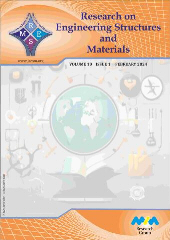Review Article
Effect of various interface bond tests and their failure behavior on substrate and overlay concrete -A Review
Kavendra Pulkit, Babita Saini, HD Chalak
Department of Civil Engineering, National Institute of Technology, (Civil engineering department), Kurukshetra, (Haryana) India
Keywords
Abstract
Bond Strength;
Interface Layer;
Overlay Concrete;
Repair Concrete;
Substrate Concrete
Concrete is a widely used building material in the construction sector. Still, the lifespan of concrete is limited because many factors can influence the performance of concrete structures, which can be classified based on physical, chemical, and mechanical changes that occur during their service life. In addition, the structure's lifespan is being reduced due to adverse environmental conditions and loads. These require maintenance, restoration, or reconstruction. Therefore, considerable concrete remediation is necessary, and the best option is to repair it. However, the cost associated with restoring the deteriorating concrete structures is higher. The repaired concrete strength mainly depends on the interface layer, situated between the substrate (old) and overlay (new) concrete. The interface layer strength primarily depends on interface adhesion, friction, aggregate interlock, bonding agent, compaction, cleanliness, moisture content, concrete age, roughness, and time-dependent variables. Multiple tests are available to analyse the bonding behavior between substrate-overlay concrete. However, no particular method is available to access the bond strength. This paper describes various methods and techniques used by researchers to evaluate bond strength. The reviewed summary has shown that concrete repair is the best solution, and higher-strength concrete uses show better shear results; also, conventional concrete is more economical than higher-strength concrete. Among all the available tests the bi-surface shear test and slant shear test are the more suitable method to determine the bond strength.
© 2023 MIM Research Group. All rights reserved.


